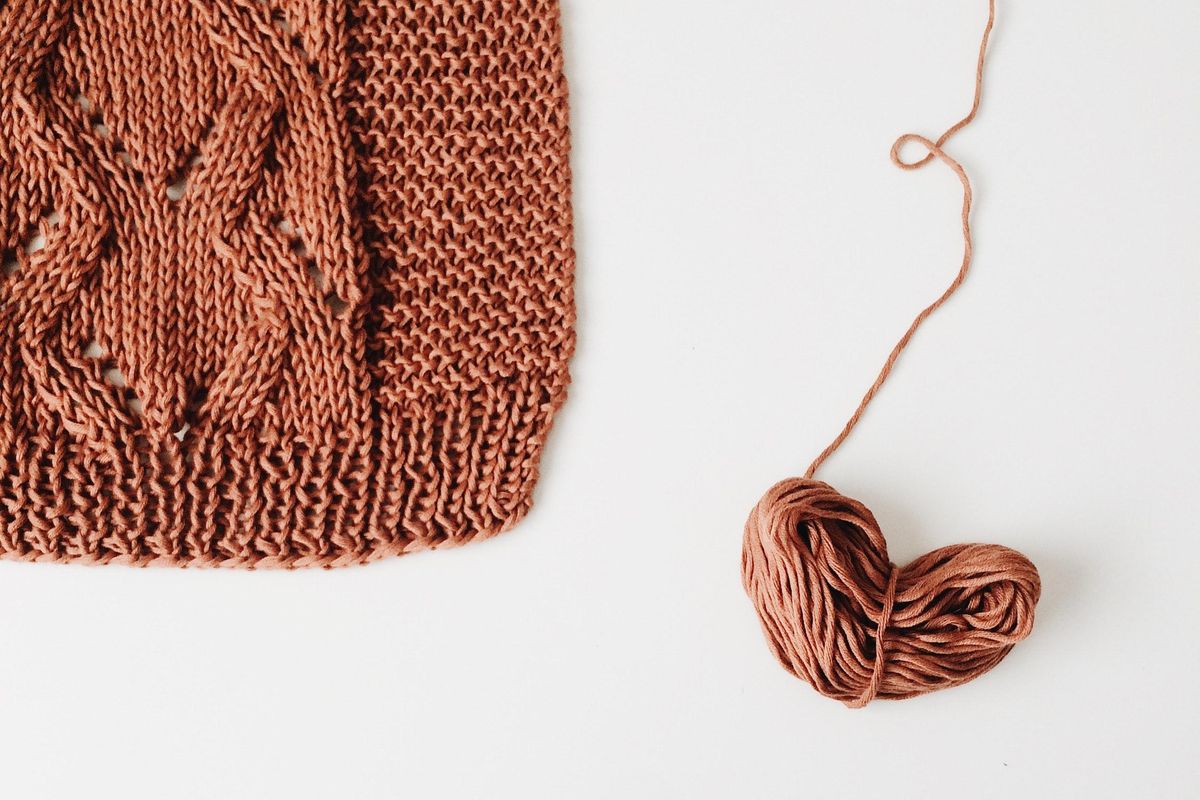Knitters around the world unite to finish projects left behind by people who passed away
Loved ones will be able to appreciate these items the way they were intended.

The volunteers at Loose Ends finish knitting projects and mend broken hearts.
A cold reality of death is that it cares not at all about the things we’ve yet to complete while living. It comes relentlessly, even when the home is nearly remodeled…when the vacation is but a week away…when we are this close to finishing that book that brought so much joy. It comes when it comes, no exceptions.
Though there is no negotiation with this force of nature, those with loved ones who have passed on are being given a little bit of closure—one blanket, scarf or sweater at time.
When friends and knitting enthusiasts Jen Simonic and Masey Kaplan realized that they both shared the experience of frequently being asked to finish knitting items left undone by those who have died, they were inspired to create a like-minded community that expanded beyond their homes in Seattle and Falmouth. After all, this was an aspect of the hobby that both women deeply enjoyed.
“It occurred to us that there was an opportunity to let other people express that kind of generosity to each other as well, even between strangers,” Kaplan told local news outlet WMTW 8.
And thus, Loose Ends was born.
Loose Ends has over 1000 volunteers (otherwise known as “finishers”) spread across 19 countries, each of whom lends their knitting talents to finish the undone knitting projects of those who have passed, or for those who can no longer knit due to a disability. Once a “finisher” finishes an item, it is then shipped back to the owner—completed and ready to be cherished.
"It's like they're getting a piece of their loved one back to them," Kaplan told WMTW. "We get a lot of really touching and beautiful stories about things that are returned. As a knitter it's sort of mending a little bit of a broken heart."
"It takes 35,000 stitches to make a pair of socks, so that's 35,000 actions you're doing to produce this item that will hopefully take care of somebody, it's kind of like magic,” Simonic added in an interview with KING 5 News.
Knitters are a notoriously generous bunch. Much of the time they create their unique designs with the intention of spreading joy to others. Love is meticulously put into each and every stitch. Now, that love can be fully expressed into a tangible item—as the creator intended—rather than getting thrown away.
If you’d like to support Loose Ends, you can donate to their GoFundMe page, which helps with shipping costs and other expenses that keep the project going. Click here to learn more.





 This is a teacher who cares.
This is a teacher who cares.  Halloween costume, check.
Halloween costume, check.  Teasing and bullying can be harmful. Canva photos.
Teasing and bullying can be harmful. Canva photos. Be Nice GIF by Microsoft Store
Be Nice GIF by Microsoft Store A group of friends taking a selfie.via
A group of friends taking a selfie.via  Who would think Barilla would have nearly 500,000 listeners on Spotify? Screenshots via Spotify
Who would think Barilla would have nearly 500,000 listeners on Spotify? Screenshots via Spotify Barilla's playlists are timed to cook each variety of pasta.Screenshots via Spotify
Barilla's playlists are timed to cook each variety of pasta.Screenshots via Spotify How Its Made Food GIF
How Its Made Food GIF Do NOT break spaghetti anywhere near an Italian.
Do NOT break spaghetti anywhere near an Italian.